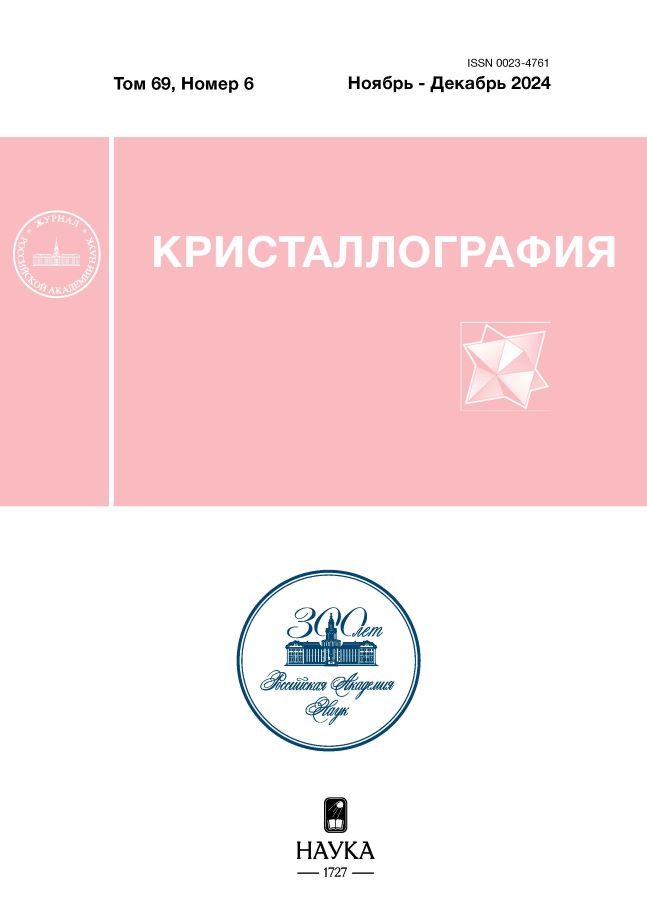Features of three-dimensional reconstruction of spirals based on small-angle x-ray scattering data
- Authors: Grigorev V.A.1, Konarev P.V.1, Volkov V.V.1
-
Affiliations:
- Shubnikov Institute of Crystallography of Kurchatov Complex of Crystallography and Photonics of NRC “Kurchatov Institute”
- Issue: Vol 69, No 6 (2024)
- Pages: 971-980
- Section: STRUCTURE OF MACROMOLECULAR COMPOUNDS
- URL: https://ruspoj.com/0023-4761/article/view/673620
- DOI: https://doi.org/10.31857/S0023476124060063
- EDN: https://elibrary.ru/YHUDKD
- ID: 673620
Cite item
Abstract
The interest in spiral particles lies in their resemblance to authentic nanostructures that emerge through the self-organisation of biopolymers (such as carrageenans, DNA, and so forth). Conversely, the determination of the structural parameters of such particles based on small-angle scattering data is challenging due to the lack of conditioning in the inverse problem. This is demonstrated by the utilisation of established bead structure modelling software. This paper considers a modification of the search algorithm in a limited area of space and the behaviour of solutions depending on the values of the parameters of the objective function responsible for the connectivity and looseness of the structure, the type of weighing of the scattering intensity curve, and the width of the angular range of data. In order to statistically assess the stability of the solutions, a sequential model search mode was applied, with varying amounts of contributions of penalty terms. The empirical dependences of the optimal values of the search parameters with respect to the parameters of the distribution curve of paired distances were determined.
Full Text
About the authors
V. A. Grigorev
Shubnikov Institute of Crystallography of Kurchatov Complex of Crystallography and Photonics of NRC “Kurchatov Institute”
Author for correspondence.
Email: vasiliy.grigorev.1996@mail.ru
Russian Federation, Moscow
P. V. Konarev
Shubnikov Institute of Crystallography of Kurchatov Complex of Crystallography and Photonics of NRC “Kurchatov Institute”
Email: vasiliy.grigorev.1996@mail.ru
Russian Federation, Moscow
V. V. Volkov
Shubnikov Institute of Crystallography of Kurchatov Complex of Crystallography and Photonics of NRC “Kurchatov Institute”
Email: vasiliy.grigorev.1996@mail.ru
Russian Federation, Moscow
References
- Свергун Д.И., Фейгин Л.А. Рентгеновское и малоугловое рассеяние. М.: Наука, 1986. 280 с.
- Svergun D.I., Stuhrmann H.B. // Acta Cryst. A. 1991. V. 47. P. 736. https://doi.org/10.1107/S0108767391006414
- Svergun D.I., Volkov V.V., Kozin M.B. et al. // Acta Cryst. A. 1996. V. 52. P. 419. https://doi.org/10.1107/S0108767396000177
- He H., Liu C., Liu H. // iScience. 2020. V. 23. 100906.
- Svergun D.I. // Biophys J. 1999. V. 78. P. 2879. https://doi.org/10.1016/S0006 3495(99)77443-6
- Franke D., Svergun D.I. // J. Appl. Cryst. 2009. V. 42. P. 342. https://doi.org/10.1107/S0021889809000338
- Kirkpatrick S., Gelatt C.D., Vecchi M.P. // Science. 1983. V. 220. P. 671. https://doi.org/10.1126/science.220.4598.671
- Григорьев В.А., Конарев П.В., Волков В.В. // Кристаллография. 2023. Т. 68. С. 941. https://doi.org/10.31857/S0023476123600295
- Волков В.В. // Кристаллография. 2021. Т. 66. С. 793. https://doi.org/10.31857/S0023476121050234
- Григорьев В.А., Конарев П.В., Волков В.В. // Успехи в химии и химической технологии. 2022. Т. 36. С. 53
- Rees D.A. Polysaccharides Shapes. London: Chapman and Hall, 1977. 80 p.
- Shtykova E.V., Volkov V.V., Konarev P.V. et al. // J. Appl. Cryst. 2003. V. 36. P. 669. https://doi.org/10.1107/S0021889803006198
- Shannon C.E., Weaver W. The Mathematical Theory of Communication. University of Illinois Press, 1949. 125 p.
- Kozin M., Svergun D. // J. Appl. Cryst. 2001. V. 34. P. 33. https://doi.org/10.1107/S0021889800014126
- Taha AA., Hanbury A. // BMC Med Imaging. 2015. V. 15. P. 29. https://doi.org/10.1186/s12880-015-0068-x
- Svergun D.I. // J. Appl. Cryst. 1992. V. 25. P. 495.
Supplementary files




















